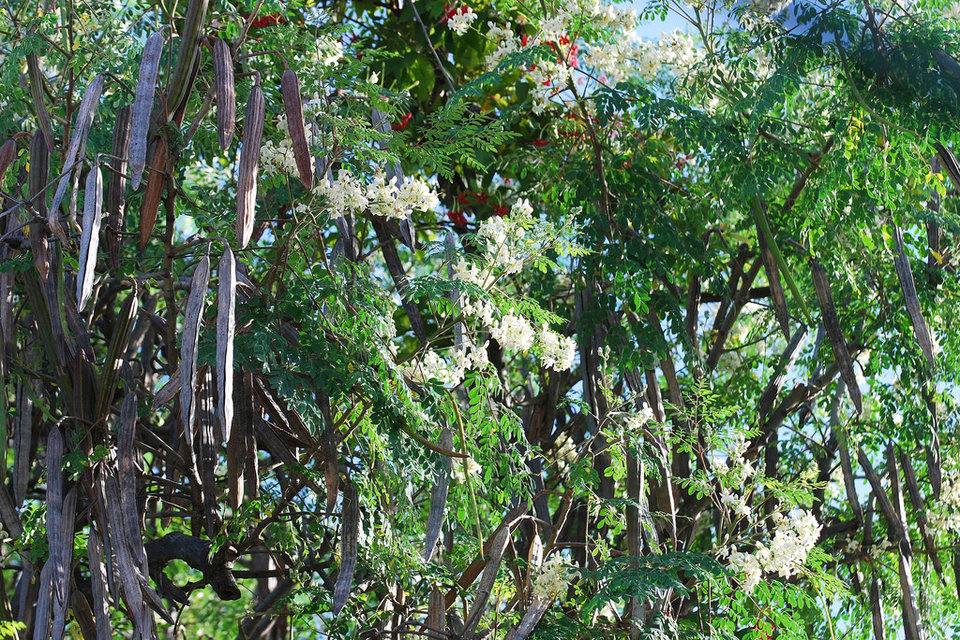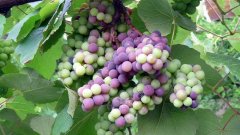What are the characteristics of Moringa oleifera and Moringa oleifera seeds? What is the function of Moringa oleifera and Moringa oleifera seed
Moringa, also known as the Miracle Tree, has attracted more and more attention and curiosity in recent years; it can be found in everything from organic food stores to cosmetic maintenance brands. What is the secret of Moringa oleifera and Moringa oleifera seeds, which is not only a driving force to maintain the environment, but also a source of nutrition that can benefit both the body and skin? Don't worry, this time let the green vine give you a complete understanding of this tree of life with high nutritional and economic value.
Introduction of Moringa oleifera
Originated in India and Africa, Moringa; (also known as Malunggay by local people) is a perennial tropical deciduous tree, which can be up to 20 years old. The bark of Moringa oleifera itself is cork, and at the top of each branch, it is intertwined into two or three rows of pinnately compound leaves. The pods of Moringa oleifera are slender in appearance, about 20cm to 60cm.
The young leaves of Moringa oleifera grow very fast and can be harvested in about 2-3 weeks, while the older leaves can be dried and processed into powder as a food additive after harvest. The pods of Moringa oleifera contain about 1235 Moringa oleifera seeds, each of which can produce an average of 10,000 to 30,000 seeds per year, with a grayish-brown triangular fruit shell, while mature Moringa oleifera seeds contain about 3040% oil and can be squeezed into oil.
The most suitable temperature for the growth of Moringa oleifera is about 25 degrees Celsius and 35 degrees Celsius, but it can also tolerate temperatures higher than 40 degrees Celsius under shade. It is also because of the astonishing growth rate of Moringa oleifera, which can grow to a height of about 4 to 5 meters in about a year. After growing for five years, the seed yield of Moringa oleifera is twice as high as that of the first batch of plants, so it can be said that it is a plant with strong vitality.
The planting season of Moringa oleifera is mainly in the local rainy season, about February or March. Due to the adaptability of Moringa oleifera itself, it can survive continuously in semi-arid areas or tropical humid environments with rainfall of more than 3000 mm. There are two harvest seasons for Moringa oleifera seeds, which are in January, October or November. When the seeds on the tree are hard and dry enough and there are cracks on the surface, it is a good time to harvest.
The whole body is useful! Nutrition of Moringa oleifera
Moringa oleifera is not only edible, but also rich in vitamin B, A, C, minerals such as potassium, calcium, iron, magnesium, selenium, zinc, as well as antioxidants such as polyphenols and flavonoids. In addition, Moringa oleifera has eight essential amino acids that the human body cannot make on its own, which can help enhance cellular immunity and maintain organ and tissue function. It is one of the good choices for vegetarians to supplement protein. In India and Africa, Moringa oleifera is also widely used to treat skin diseases, anemia, rheumatic diseases (Rheumatic diseases) and gout (gout).
In addition to medical use, Indians and Africans also eat spicy wood as a vegetable, in soup or with salad. The pods of Moringa oleifera look like beans and taste like asparagus. In addition, spicy leaves and seedlings can be powdered as seasoning, so local residents often use them to make tea or milkshakes, which not only taste warm, but also help absorb the nutrients of Moringa oleifera.
Matters needing attention in eating Moringa oleifera
Moringa oleifera itself contains alkaloids, high blood pressure, diabetes, people over the age of 70, and people who are prone to asthma caused by allergies, it is best to take appropriate amounts after being directed by a doctor to avoid poisoning. For pregnant women, "Moringa powder" (ground into powder from Moringa oleifera leaves) can help postpartum women lactation, prevent anemia, and is rich in nutrients that can help replenish nutrients lost after pregnancy. But "Moringa" and the bark of Moringa oleifera are abortion drugs, which are not safe for pregnant women and can even terminate pregnancy, so pregnant women should avoid ingesting them.
The secret of Moringa oleifera
In addition to its roots, seedlings, stems, stems and leaves have quite a variety of nutrients, another bright spot of Moringa oleifera is "Moringa seed". In addition to being rich in protein, Moringa oleifera is rich in dietary fiber and unsaturated fatty acids, especially monounsaturated fatty acids, which are similar in composition to olive oil and help reduce bad cholesterol.
The United Nations has also used Moringa oleifera to improve malnutrition, inflammation and gastrointestinal discomfort in children in response to nutritional problems caused by famine among African residents. For more complete nutrients of Moringa oleifera seed, please see below:
Nutrients per 100 grams
Carbohydrates (Carbohydrate) 8.53
Protein (Protein) 2.10
Fat (Total Fats) 0.20
Dietary fiber (Dietary Fiber) 3.2
Cholesterol (Total Cholesterol) 0
Niacin (B3) 0.62mg
Calcium (Calcium) 30mg
Magnesium (Magnesium) 45mg
Phosphorus (Phosphorus) 50mg
Potassium Potassium 461mg
Natural water purifier
In terms of environmental conservation, many scientists who study Moringa oleifera have found that Moringa oleifera seeds contain many low molecular weight water-soluble proteins, some of which are positively charged polyelectrolytes, which are positively charged in the solution and negatively charged particles that make water muddy, such as sediment, clay, bacteria and so on. With proper stirring, it can help remove more than 90% of the bacteria and purify turbid drinking water. For African and Indian residents who have relatively difficult access to clean water sources, Moringa oleifera seed is undoubtedly a natural and convenient water purification tool.
A wide range of uses outside of food
Due to the strong water-locking ability of Moringa oleifera seed, which can grow even in a steep environment, and because it contains a variety of precious nutrients, including food, medical, and even cosmetic and health care industries, you can see the extract of Moringa oleifera being added to it. In addition, since 2015, the green rattan team has also launched a fair trade cooperation with MoringaConnect to bring the moringa oil from Ghana, Africa, back to Taiwan, hoping to make more people feel the true beauty of the "miracle tree".

- Prev

5G combined with intelligent agriculture, how about the application of 5g intelligent agriculture / the impact of 5g on agriculture?
The development of intelligent agriculture is that for thousands of years, traditional farmers have been working hard to hoe and harvest at noon, and the scene of sweat falling into the soil under he has changed, and the figure of farmers working hard in the farmland will become machines operating efficiently. Amy Modern Farmer in Caocun, Ruian, Zhejiang Province
- Next

What is the reason for uneven coloring of grapes? How to fertilize and water grapes during the color conversion period
The grapes in Luan Guojun's family encountered a strange thing during the mature period. For some reason, the grapes in the vineyard were green, red, purple, really colorful and varied. Does this have anything to do with the method of growing grapes? Looking at the families of other farmers
Related
- A course of planting techniques and methods on how to grow carrots
- How to plant the latest tulips?
- Is it better to pick tea in the morning or in the afternoon? When is the best time for tea to be picked? what is the third or fifth tea?
- Launch Yuanxiao Happy combination Haocha + Tea Yuan healthy Taste
- Penghu Tourism "Fireworks 20 Parade with You"
- 2022 West Lake Happiness holds "Digital Revitalization Voucher" and draws iphone13 and laptop.
- Banqiao Fuzhou social houses are designed to change start-up combined with police elimination to create a safe and livable environment
- The convenient measure of "mechanical weeding" in Xinbei has been abused and the Agriculture Bureau has imposed heavy penalties on the illegal land consolidation.
- Changgeng University Joins Hands with Four Memory Factories to Rescue Memory Talent Shortage
- The list of Taiwan's top 100 MVP managers is listed by the Director-General of the Farmers' Association of Sanxia District.

